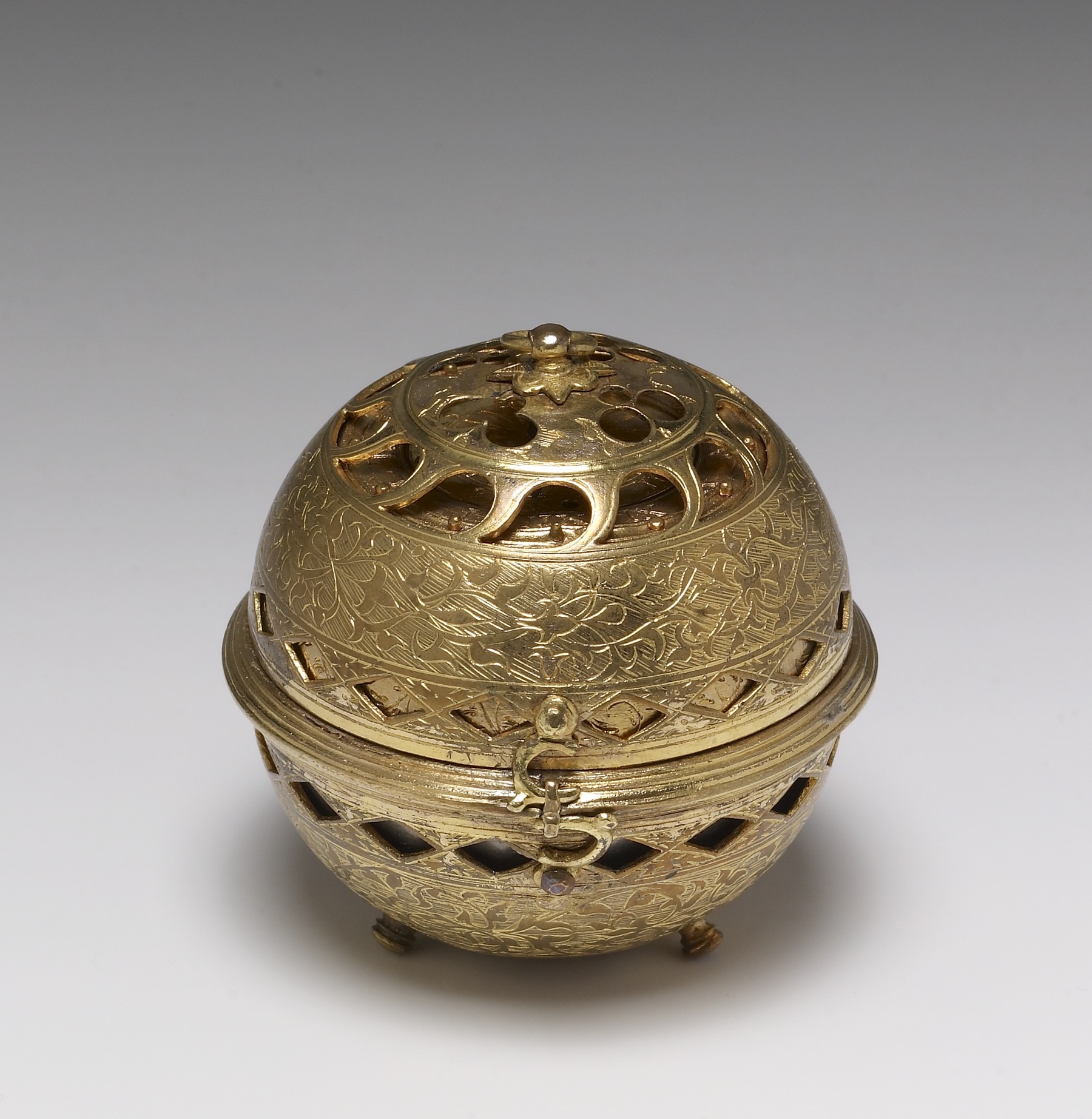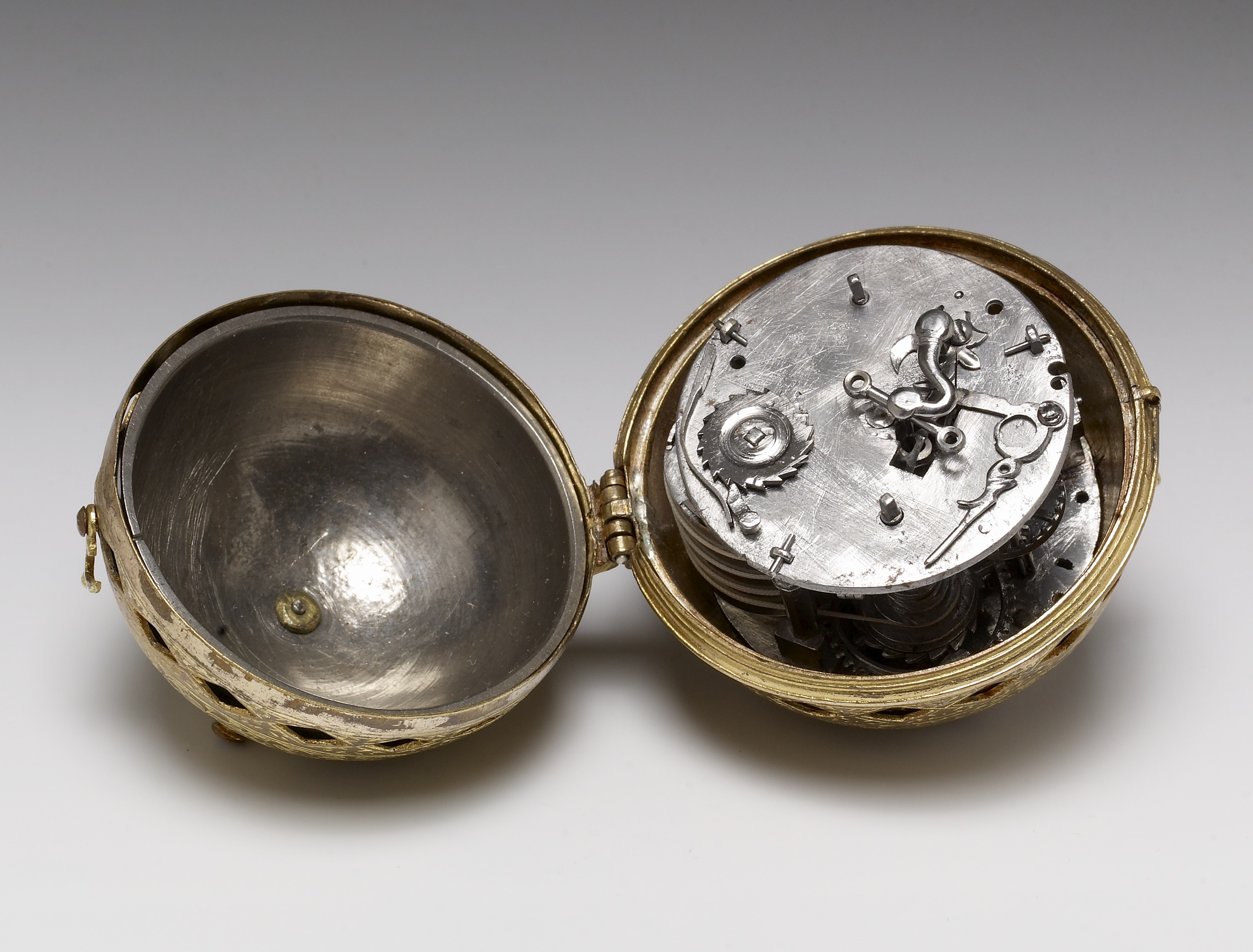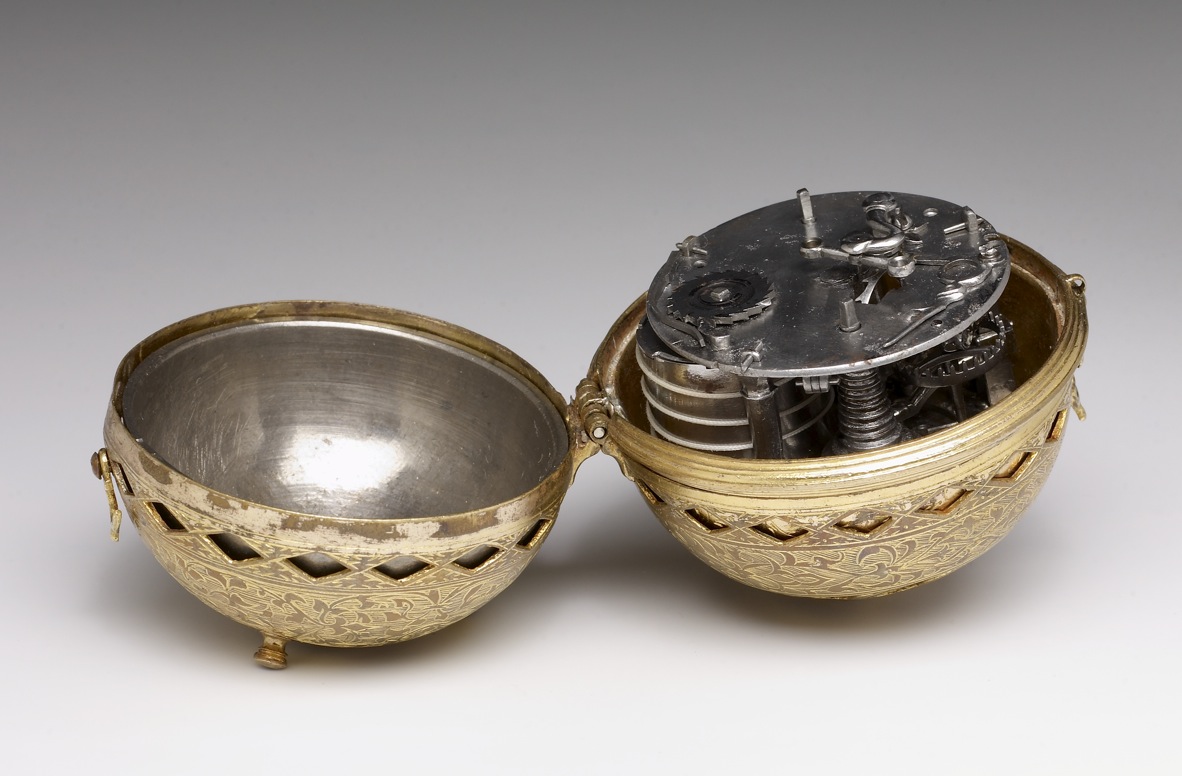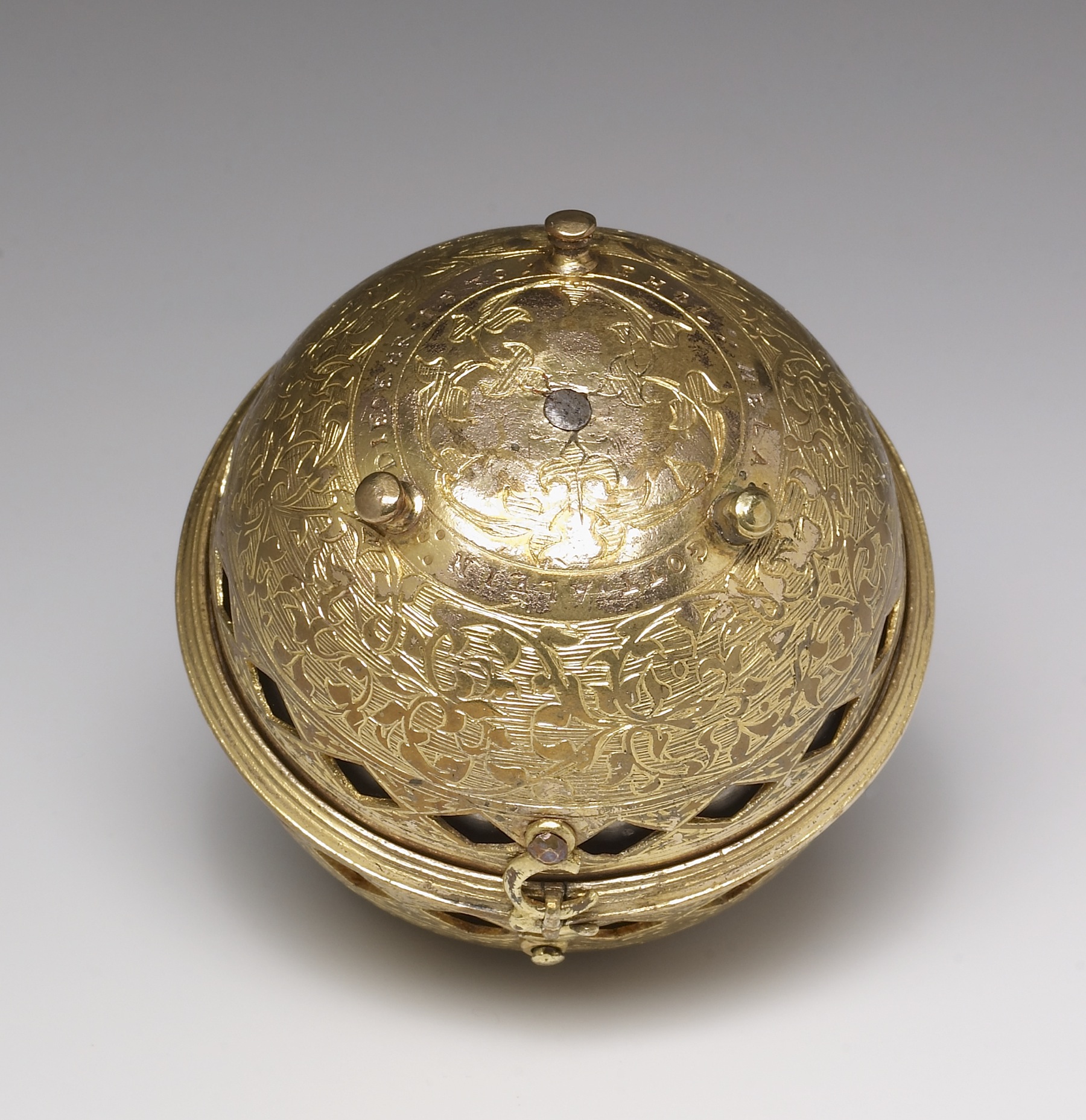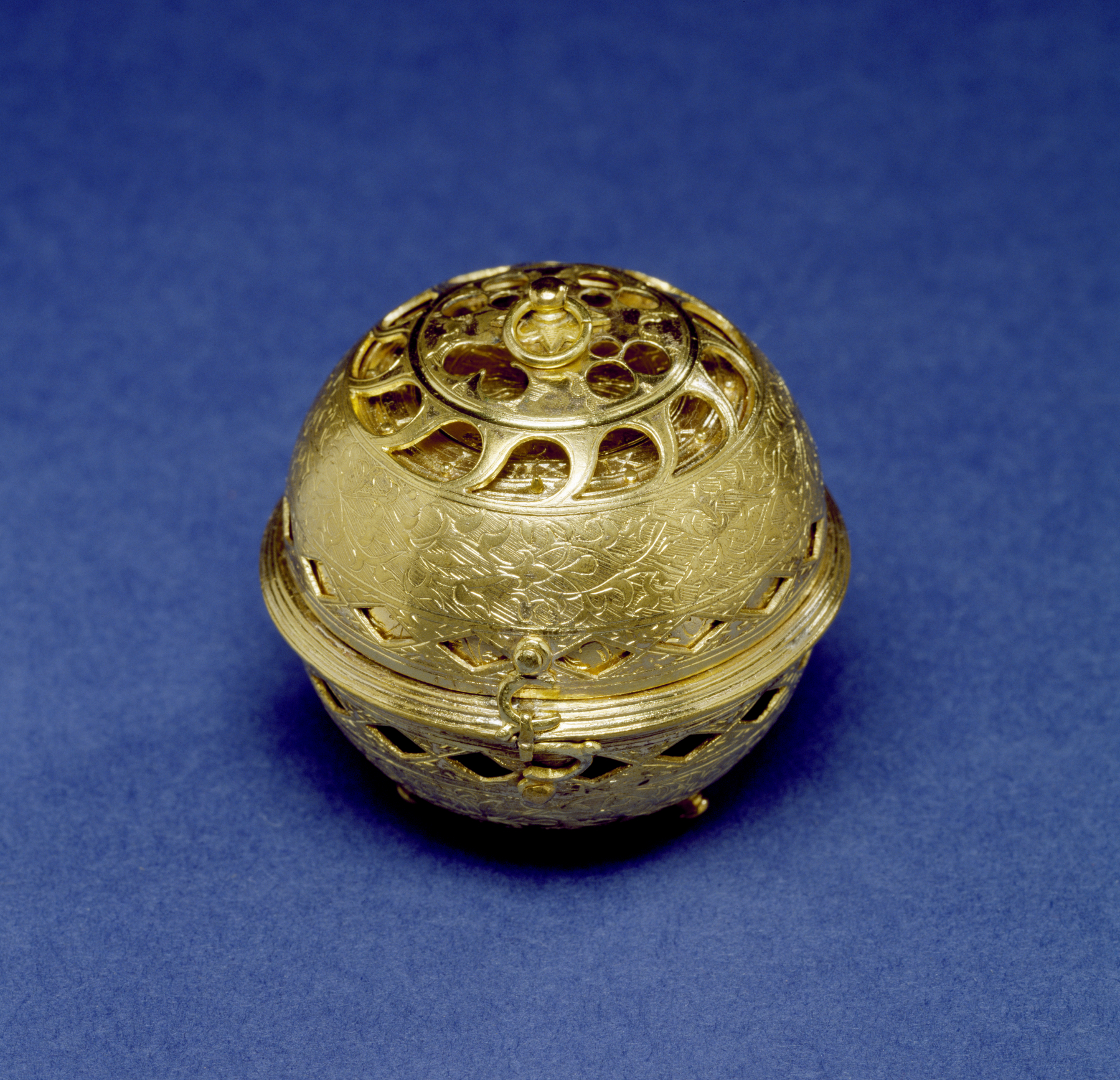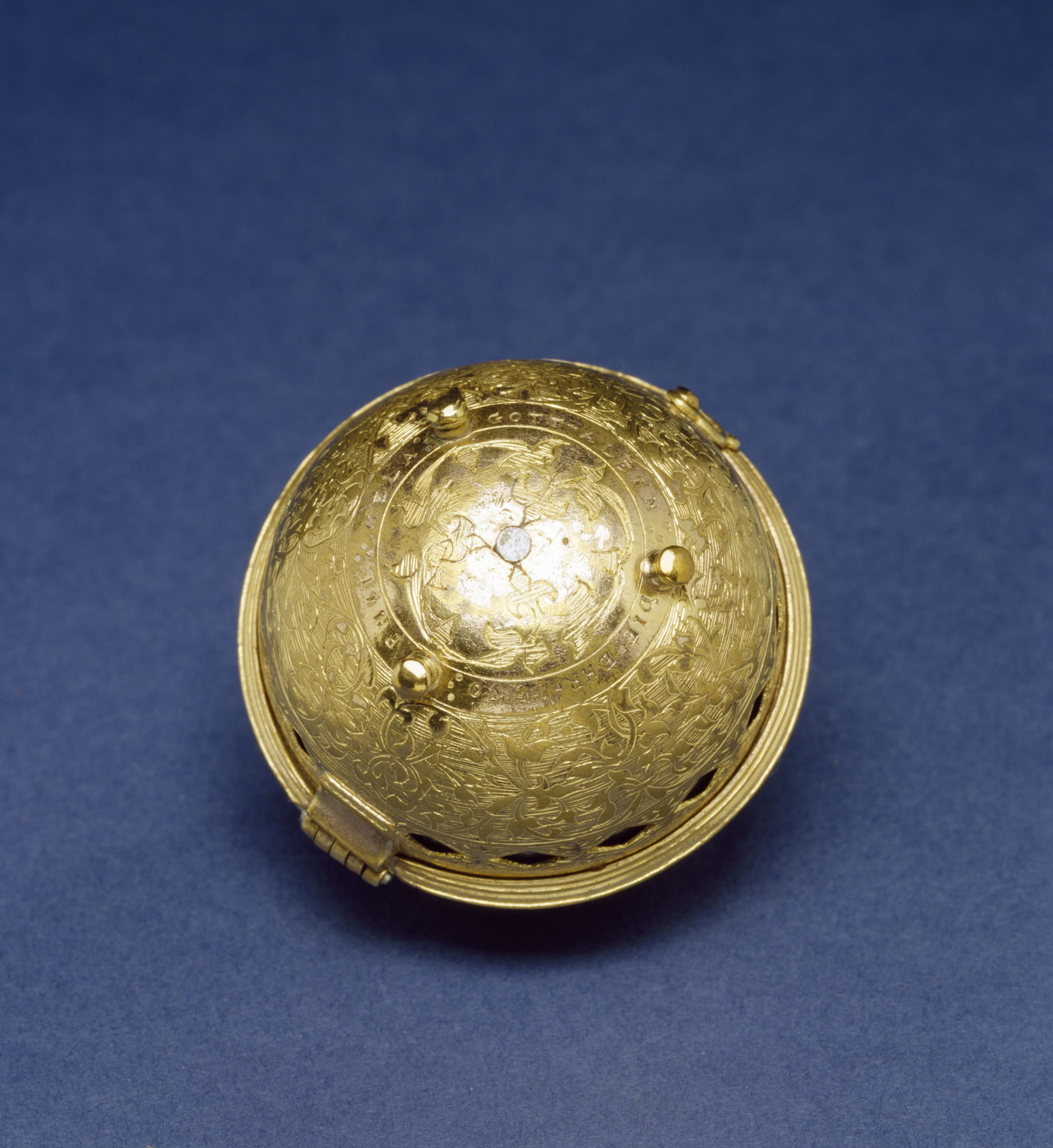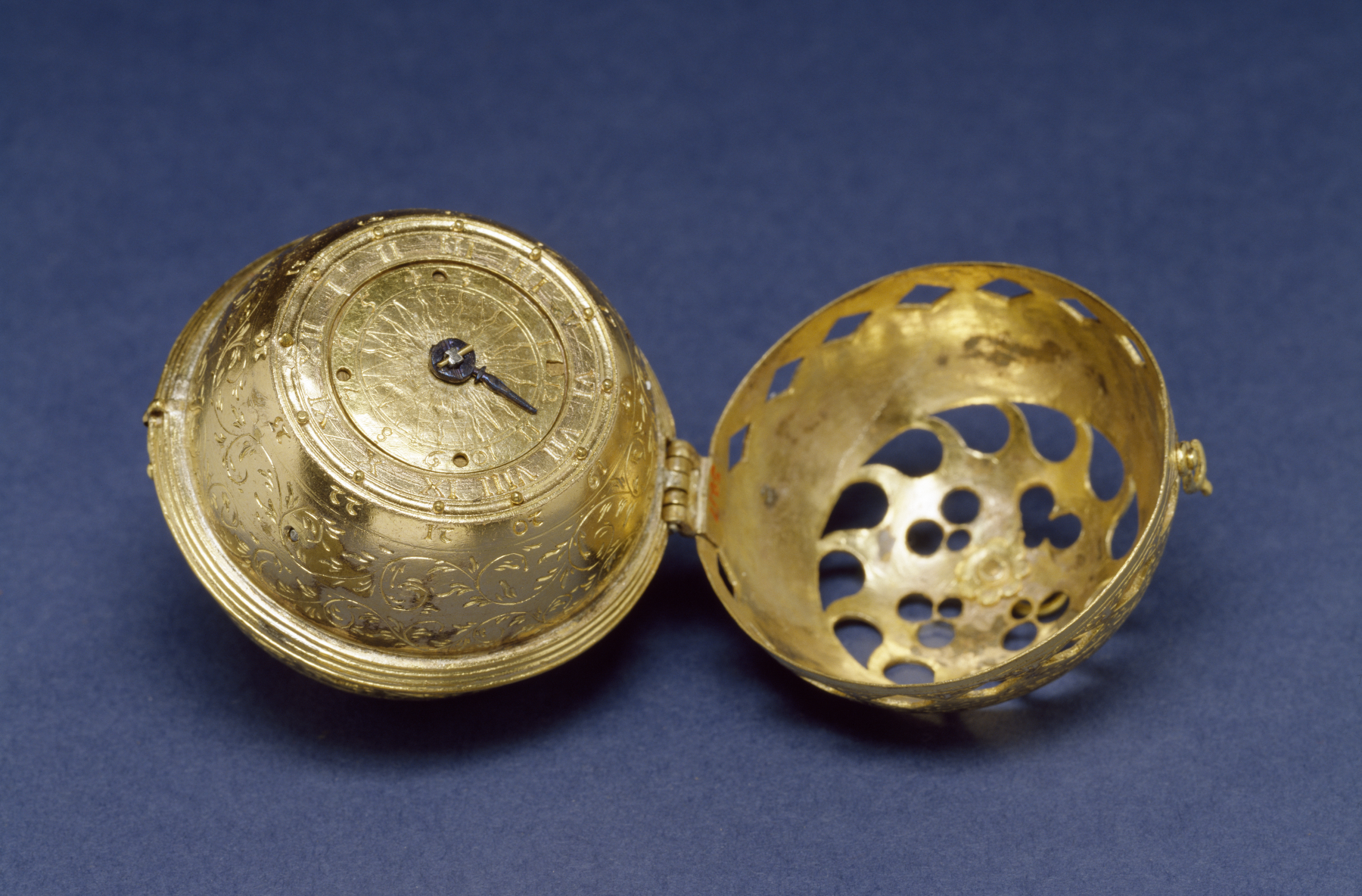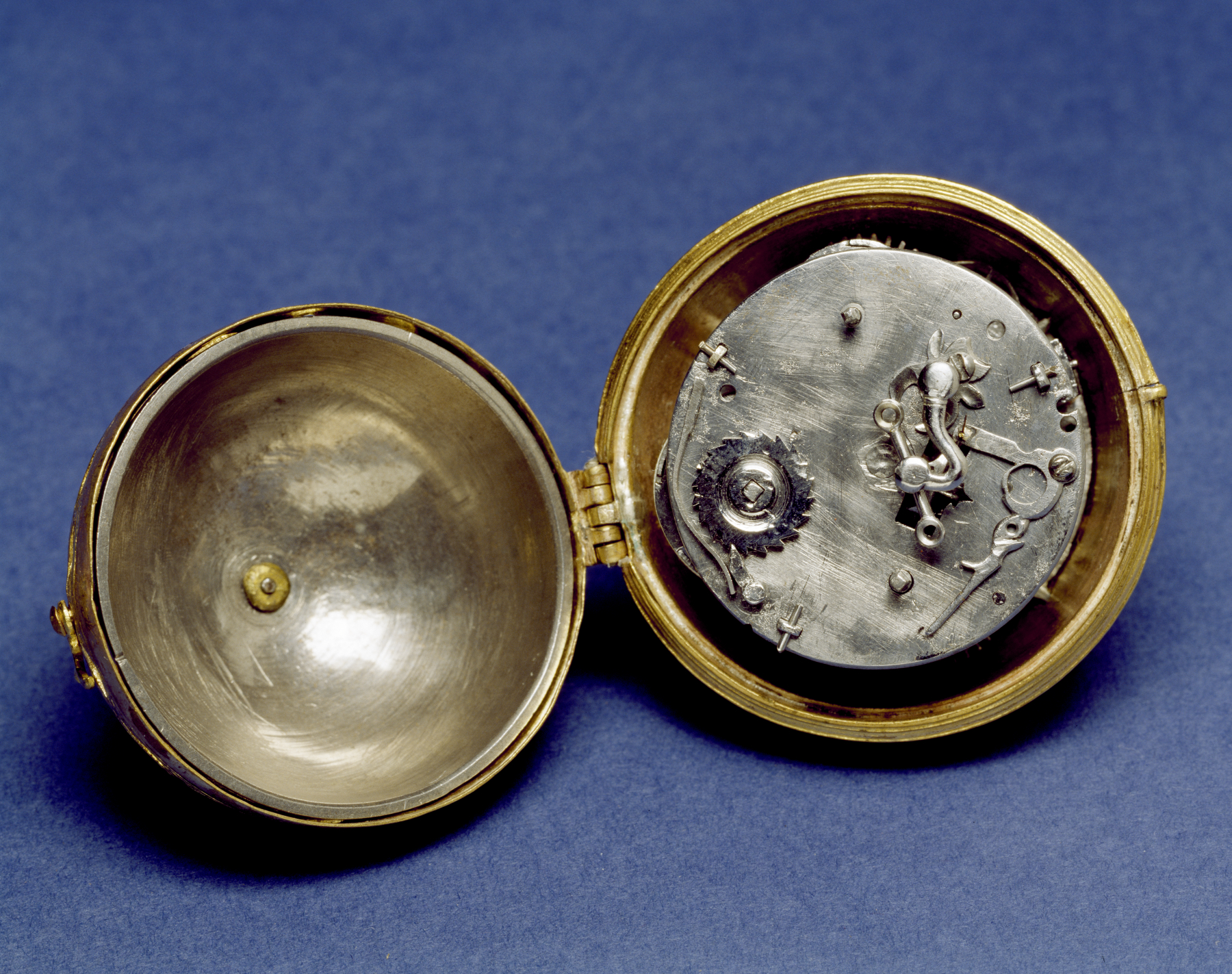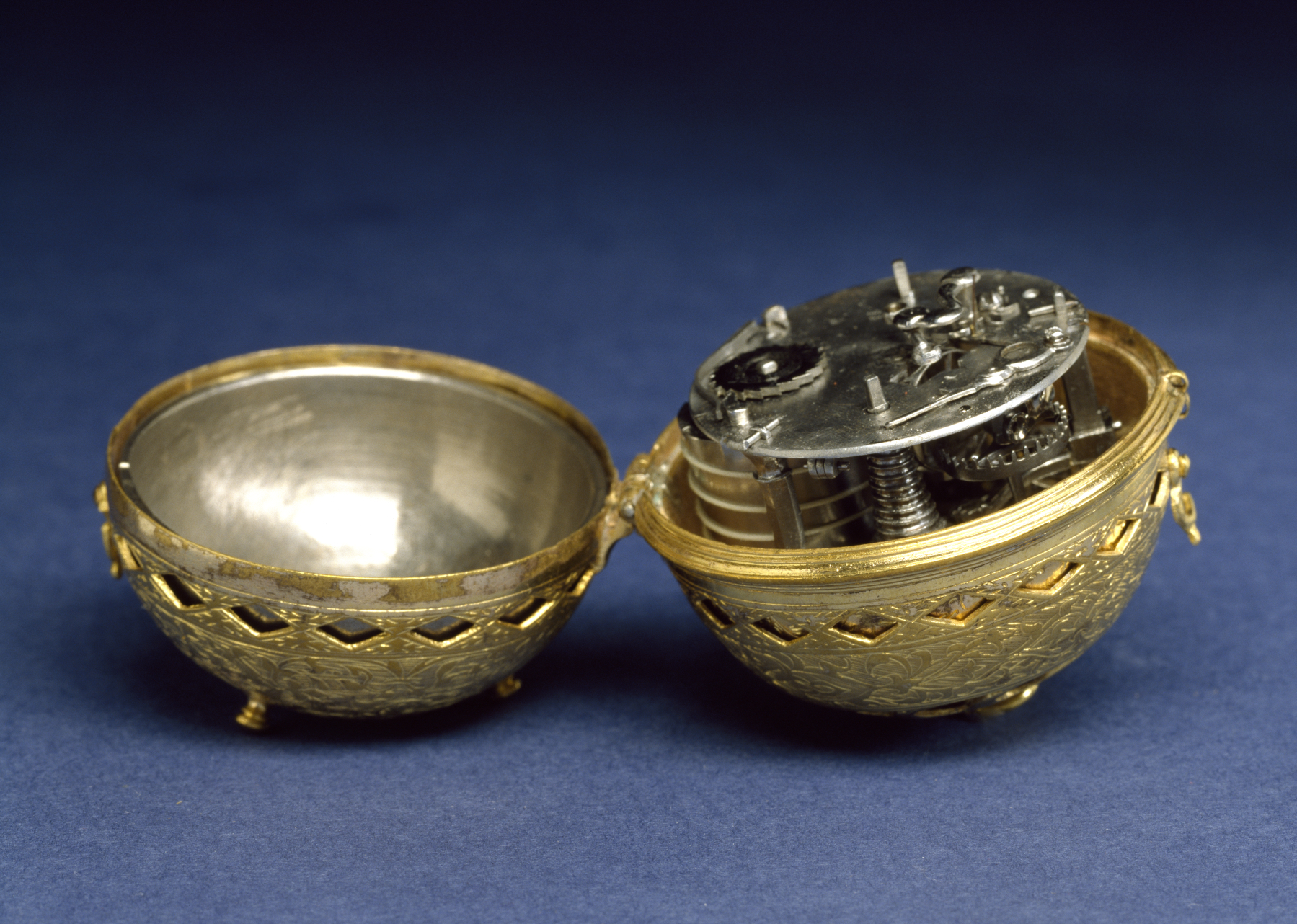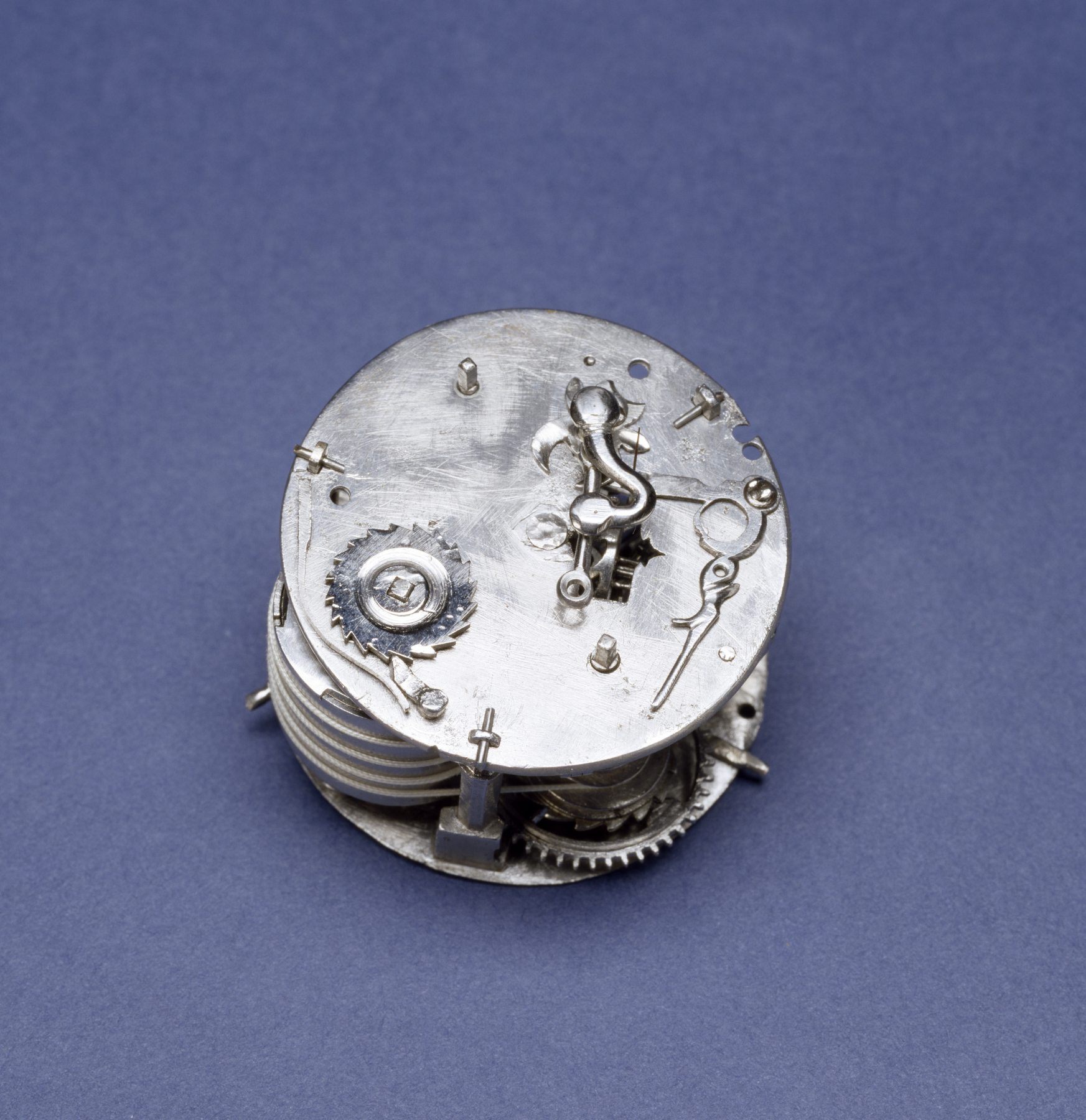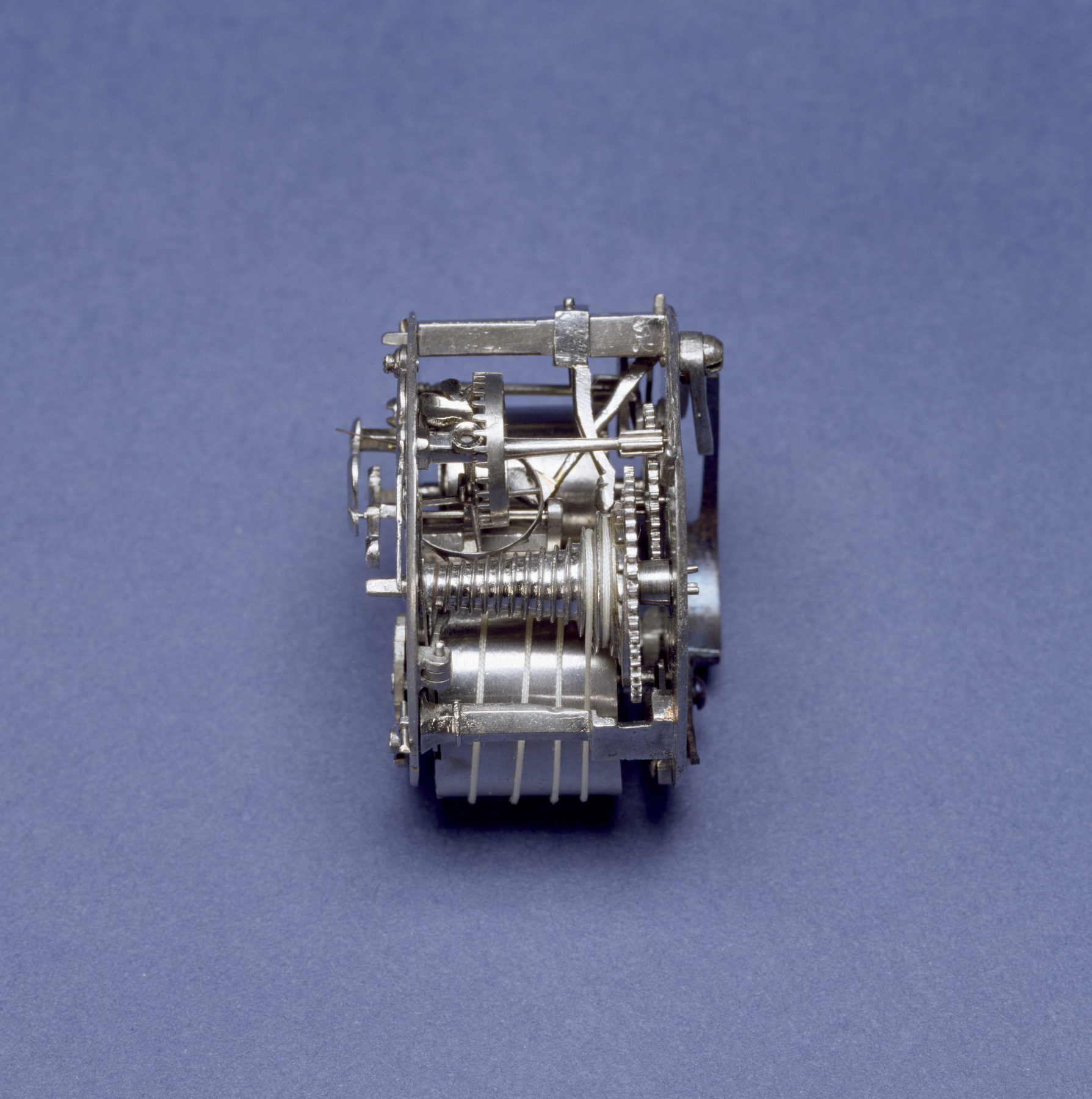Spherical Table Watch (Melanchthon's Watch)
(Renaissance Europe )
This is the earliest dated watch known. It is engraved on the bottom: "PHIL[IP]. MELA[NCHTHON]. GOTT. ALEIN. DIE. EHR[E]. 1530" (Philip Melanchthon, to God alone the glory, 1530). There are very few watches existing today that predate 1550; only two dated examples are known--this one from 1530 and another from 1548. There is no watchmaker's mark, but Nuremberg is considered the birthplace of spherical watches. In 2014 Scholars concluded that its characteristics are consistent with an attribution to Peter Henlein, responsible for this pioneering development in the history of the time piece and indeed in the history of the hand-held calculating device. So this is the earliest dated calculating device meant to function in the hand.
A single winding kept it running for 12 to 16 hours, and it told time to within the nearest half hour. The perforations in the case permitted one to see the time without opening the watch.
This watch was commissioned by (or was a gift for) the great German reformer and humanist Philip Melanchthon (1497-1560).
Inscription
Provenance
Provenance (from the French provenir, 'to come from/forth') is the chronology of the ownership, custody, or location of a historical object. Learn more about provenance at the Walters.
Jacques Seligmann, Paris, by purchase; Henry Walters, Baltimore, 1910, by purchase [For invoice, see Archives of American Art, Jacques Seligman and Co. Records, B-309, F-1, S-7, No. 690]; Walters Art Museum, 1931, by bequest.
Exhibitions
| 2017 | Luther! 95 people – 95 treasures. Lutherhaus – Augusteum, Lutherstadt Wittenberg. |
| 2014-2015 | Henlein-Uhrenstreit (Henlein Watch Controversy). |
| 2012 | Touch and the Enjoyment of Sculpture: Exploring the Appeal of Renaissance Statuettes. The Walters Art Museum, Baltimore. |
| 2000-2001 | Philip Melanchthon's Watch. The Walters Art Gallery, Baltimore. |
Conservation
| Date | Description | Narrative |
|---|---|---|
| 5/13/1958 | Treatment | cleaned |
| 10/17/1961 | Treatment | cleaned; coated |
| 4/21/1999 | Treatment | cleaned; repaired |
| 6/1/2001 | Examination | examined for condition |
Geographies
Germany, Augsburg
(Place of Origin)
Germany, Nuremberg (Place of Origin)
Measurements
H with loop: 2 1/16 × W: 1 7/8 × D: 1 15/16 in. (5.3 × 4.8 × 5 cm); H without loop: 1 7/8 × W: 1 7/8 × 1 D: 15/16 in. (4.7 × 4.8 × 5 cm)
Credit Line
Acquired by Henry Walters, 1910
Location in Museum
Accession Number
In libraries, galleries, museums, and archives, an accession number is a unique identifier assigned to each object in the collection.
In libraries, galleries, museums, and archives, an accession number is a unique identifier assigned to each object in the collection.
58.17


